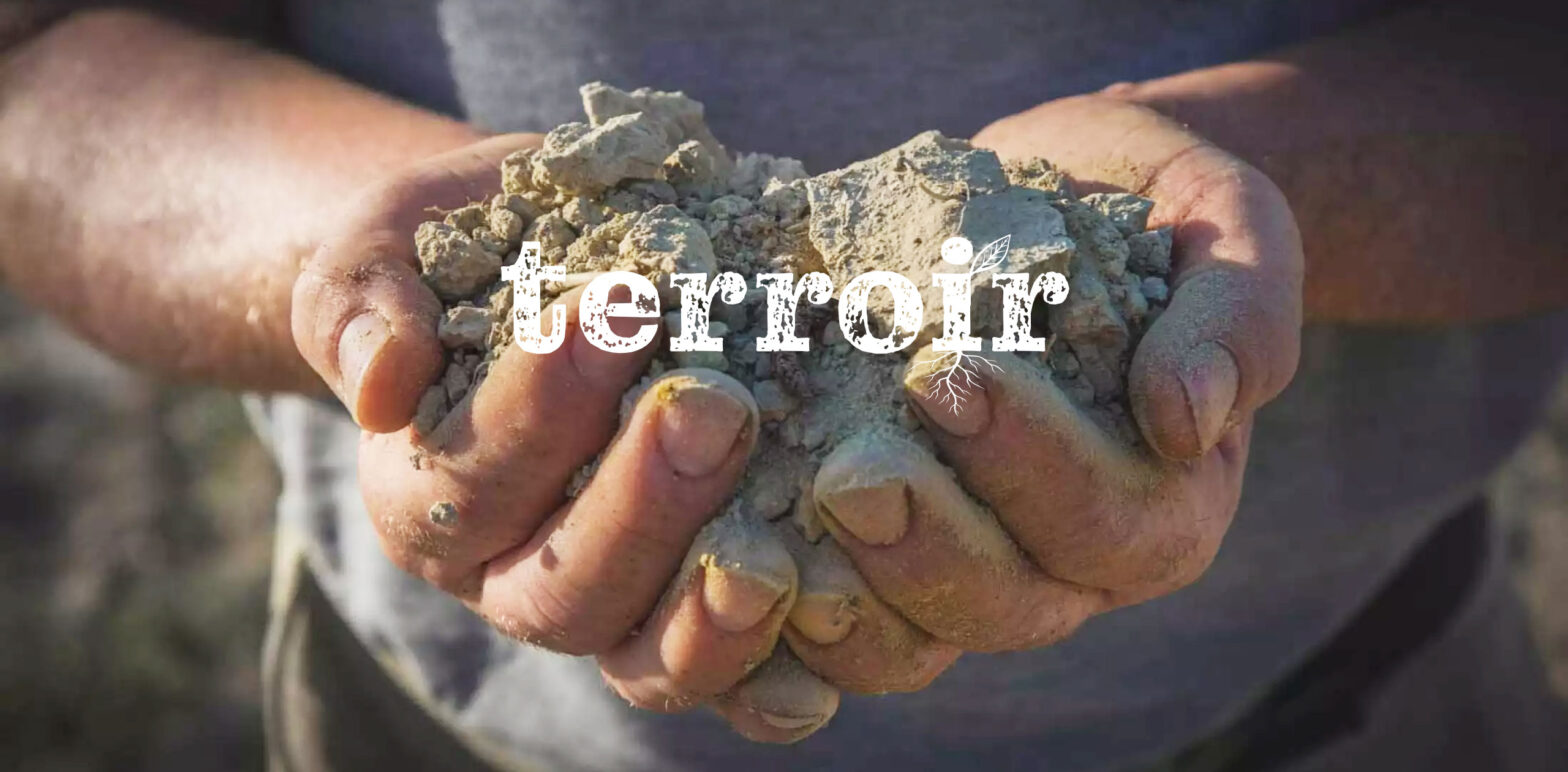Terroir
Terroir is originally a French term used to denote (designate and indicate) the special characteristics that a unique geography has bestowed upon wine. It can be very loosely translated as ‘an essence or sense of place’ which is embodied in certain qualities, and the sum of these effects that the local environment has on the wine.
The concept of terroir is at the core of the French AOC/AOP wine system that has been a model for appellations, wine laws across the globe. At its core is the assumption that the land from which the grapes are grown impart a unique quality and character that is unique and specific to that region and place / site. The amount of influence that falls under the description of 'terroir' has been the source of many long conversations.
The concept of 'terroir' developed through centuries of French winemaking based on observation of what made wines from different regions, vineyards or even different sections of the same vineyard so different from each other.
The French began to crystallize the concept of 'terroir' as a way of describing the unique aspects of a place that influences the wine made from there. While wine experts differ to the exact definition, a large focus is given to the natural elements that are generally considered beyond the control of man.
• Some of the components described relating to 'terroir' include: Climate, Soil Composition, Aspect & Topography.
The interaction of climate and 'terroir' is generally broken down from the macro-climate of a larger area (e.g. the Côte de Nuits region of Burgundy), down to the meso-climate of a smaller subsection of that region (e.g. the village of Vosne-Romanee) and even to the individual micro-climate of a particular vineyard or row of vines (like the Grand Cru vineyard of Romanee-Conti). The element of soil relates both to the composition and the intrinsic nature of the vineyard soils, such as fertility, drainage and ability to retain/disperse heat.
Topography refers to the natural landscape features like mountains, valleys and bodies of water, which affect how the climate interacts with the region, and includes elements of aspect and altitude of the vineyard location.

Typicity
Typicity (French 'typicite' and in Italian 'tipicita') is a term in wine tasting used to describe the degree to which a wine reflects its varietal origins, and thus the wine demonstrates the signature characteristics of the grape from which it was produced, i.e. how much a Sangiovese wine - tastes like a Sangiovese wine. It is an important component in judging wines - when wines of the same varietal / region are judged against each other.
Wines with 'typicity' - that are typical of a varietal / region are said to exhibit traits or characteristics distinctive to its kind. Most wine reviews base quality assessments largely on evaluating wines by; balance, length, intensity and complexity, typically not how closely they model to some potentially theoretical standard of typicity.
Some are starting to think that along with 'typicity' we probably need to add 'consistent' or 'reliable' to fully capture the true French meaning. I think typicity can suggest that you will receive in your wine glass what you have enjoyed before, and perhaps more importantly, what you expect to enjoy from this particular grape and wine style you have bought.
Also it must be said that a wine with typicity or made from a single grape varietal true to its origins carries a purity you can lose when you blend it with other varieties or over manipulate during the winemaking process.
Typicity means something that can separate, characterize a detail, the complexity of characteristics that individualises or particularises the wine. Wines with 'typicity' are also influenced by the local history and cuisine, specific to the region of origin, and specific to a certain grape varietal (clone).
The wine represents a complex mix of organic and inorganic compounds. There are many diverse factors that influence its composition. They can come from the vineyard, extending to the fermentation and post-fermentation process. These factors are deeply connected to the oenological environment, including soil, climate, grape varietal and oenological practice that also define the authenticity and typicity of wines.

